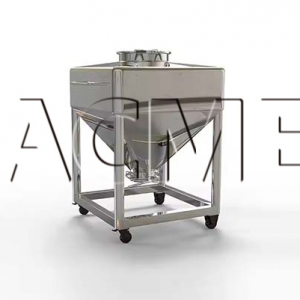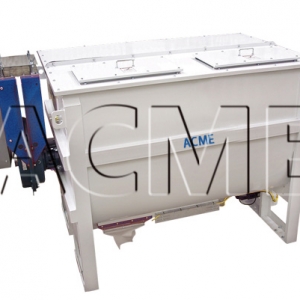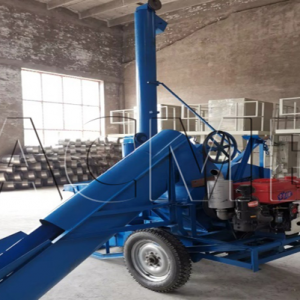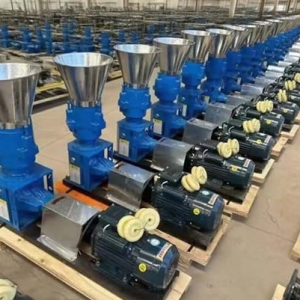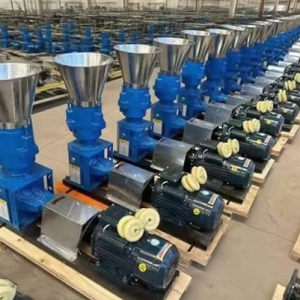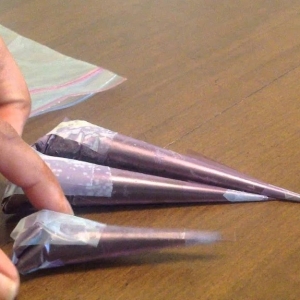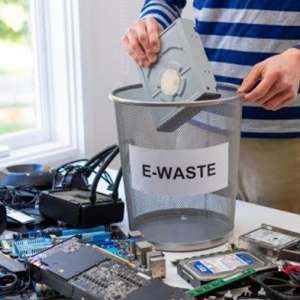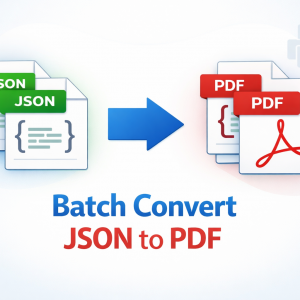As core equipment in the industrial crushing field, roller crushers are undergoing unprecedented technological changes. From mining to construction waste recycling, from traditional extensive crushing to intelligent and precise control, roller crushing technology continues to break through performance boundaries and provide modern industry with efficient and energy-saving crushing solutions. This article will deeply analyze the latest design concepts, innovative material applications, intelligent control systems and diversified industry practices of roller crushers. Through actual cases of international leading companies such as Sandvik and Metso, it will show how this traditional equipment maintains its market competitiveness through continuous innovation. Based on the latest research report from Global Market Insights, we will also interpret the changes in the global market landscape and conduct a forward-looking analysis of the far-reaching impact of trends such as digitalization and large-scale development on the future of the industry.
Design breakthrough and performance leap of modern roller crusher
The technological evolution of roller crushers has shifted from simple structural optimization to systematic innovation, encompassing multiple dimensions such as crushing mechanism, power transmission, and wear-resistant technology. Sandvik's CR series roller crushers utilize a patented "progressive crushing chamber" design. By varying the gap gradient between the two rollers, they achieve multi-stage crushing, improving energy efficiency by over 20%. This innovative structure transforms the traditional single-stage brute force crushing process into multiple gentler crushing operations, reducing transient loads and significantly improving product particle size distribution. Metso's HRC™ series incorporates "curved roller surface" technology, with the rollers' center diameter slightly larger than the ends. This effectively compensates for gap variations caused by roller wear, maintaining a stable output particle size throughout the equipment's service life.
The in-depth application of hydraulic technology has revolutionized roller crusher adjustment. Xuzhou Xugong Mining Machinery Co., Ltd.'s XGR series fully hydraulic roller crushers utilize an independent hydraulic motor to drive each roller, eliminating the traditional gear drive system and enabling independent and precise speed control of each roller. This design is particularly advantageous when handling sticky and wet materials. By adjusting the speed differential between the two rollers, shear force is generated, effectively preventing material sticking and clogging. Test data shows that compared to traditional gear transmissions, the fully hydraulic drive system can save 15-25% energy and reduce noise by 8-10 decibels. Even more advanced is the "constant power control" function, which automatically adjusts the roller speed and pressure based on the material's hardness, keeping the motor operating at optimal conditions and avoiding the energy waste associated with traditional equipment.
Breakthroughs in wear-resistant materials have significantly extended equipment maintenance cycles. CITIC Heavy Industries' roller crusher utilizes "gradient composite roller sleeve" technology, creating a 15mm-thick carbide layer on the base material through a laser cladding process. The surface hardness can reach over HRC65 while maintaining excellent toughness. Luoyang Bailike Mining Machinery Co., Ltd. has developed a "self-healing" wear-resistant material. When microcracks appear on the roller surface, special components in the material migrate to the crack under stress, enabling self-healing. Applications at the Dexing Copper Mine in Jiangxi Province have shown that this self-repairing roller surface offers a 40% longer service life than traditional high-chromium cast iron, while reducing the cost per ton by 30%.
Another key advancement is the improved reliability of bearings and drive systems. Taiyuan Heavy Industry's TYZ series large roller crushers utilize a combination of multi-row cylindrical roller bearings and spherical roller bearings, coupled with a thin oil circulation lubrication system, resulting in bearing life exceeding 10,000 hours. Northern Heavy Industries Group Co., Ltd.'s innovation lies in integrating the planetary gear reducer directly into the roller shaft, eliminating the traditional coupling and long drive shaft. This not only creates a compact structure but also solves the problem of axis alignment. In comparative tests at a large sand and gravel aggregate production line in Hebei Province, this direct-drive design achieved a failure interval 2.5 times that of traditional structures, reducing maintenance costs by 60%.
Modular design concepts are profoundly transforming the manufacturing and service models of roller crushers. The XCMG XGR series utilizes a three-section frame design, enabling rapid on-site disassembly and transportation, addressing the challenges of underground mine installation for large equipment. Metso's HRC™ series offers a "plug-and-play" wear parts system, allowing users to replace a complete set of roller covers in just 8 hours, significantly reducing maintenance downtime. This modular approach also extends to crushing chamber configurations—the same equipment can adapt to different process requirements from coarse to fine crushing by replacing different types of roller covers (such as toothed, grooved, or smooth), achieving the flexibility of "one machine for multiple uses."
Intelligent control systems have become standard equipment for high-end roll crushers. The "Intelligent Crushing Expert System" in the XCMG XGR series analyzes over 20 parameters, including current, pressure, and temperature, in real time, automatically optimizing the roll gap and rotational speed to maintain product particle size within the set range. Even more advanced is Sandvik's "Remote Diagnostic Platform," which transmits equipment operating data to the cloud via 5G networks. This system, either by an expert system or human engineers, provides real-time monitoring and fault warnings. In practical application at the Yunnan Pulang Copper Mine, this system has successfully predicted multiple potential failures, avoiding unplanned downtime and saving over 2 million yuan in annual maintenance costs. Luoyang Bailike Mining Machinery Co., Ltd. has developed a machine learning-based "adaptive crushing system" that memorizes optimal crushing parameters for different ore characteristics. When similar materials are detected, it automatically recalls historical data, ensuring the equipment is always operating at optimal performance.
Advances in safety and environmentally friendly design are equally important. Modern roll crushers are generally equipped with triple safety features: a mechanical overload protector, a hydraulic safety coupling, and an electrical overload protection system, ensuring catastrophic failure under any circumstances. In terms of environmental protection, Metso's HRC™ series utilizes a fully enclosed structure with a negative pressure dust removal system, keeping workplace dust concentrations below 2mg/m³. Meanwhile, the XCMG XGR series reduces dust generation by 60% through optimized airflow. Its accompanying noise reduction hood reduces ambient noise levels to below 75dB, meeting the most stringent environmental regulations.
These technological innovations have collectively driven comprehensive improvements in roll crusher performance, achieving unprecedented levels of crushing efficiency, energy consumption control, and ease of maintenance. The following in-depth analysis of specific industry applications will demonstrate how these technological advancements translate into practical production benefits, meeting the specific crushing needs of various sectors.
Diversified industry applications and typical case analysis
The application areas of roller crushers are expanding at an astonishing rate, from traditional mining crushing to emerging solid waste treatment, from metallurgical auxiliary material processing to high-value-added mineral preparation, and various specialized models are constantly emerging. This section will deeply analyze the innovative applications of roller crushers in various industries, and through real cases of international companies such as FLSmidth and Terex, show how this technology solves special crushing problems in various fields and creates significant economic and environmental benefits.
Efficient Solutions for Mineral Processing
Pre-processing precious metal ores places stringent demands on crushing equipment, requiring both sufficient disaggregation and avoiding metal loss due to over-crushing. FLSmidth's ABON series roller crushers have demonstrated unique value in South African gold mines. Their "low-pressure, high-repetition" crushing principle is particularly well-suited for processing gold-bearing quartz veins. By adjusting the roller tooth profile and clearance, the ore is fractured along grain boundaries under shear force, releasing gold particles intact without excessive crushing. Actual production data shows that compared to traditional jaw crusher + cone crusher systems, the ABON roller crushing system increases gold recovery by 1.2-1.8 percentage points while reducing energy consumption by 35%, generating over $5 million in additional annual profits for the mine.
Roller crushing technology for iron ore beneficiation is undergoing a revolutionary transformation. Terex's TGSS series high-pressure grinding rollers (HPGRs) have set an industry record of 40 million tons of annual processing capacity per unit at Vale's Carajás mine in Brazil. This equipment combines traditional crushing and grinding processes, creating microscopic cracks in the ore through linear pressures of up to 5 N/mm², significantly reducing energy consumption in the subsequent ball mill. Key innovations lie in its unique roller liner technology and hydraulic floating bearing design, which ensure stability under high pressure while allowing for automatic retraction of foreign matter. Production data indicates that the introduction of high-pressure grinding rollers has reduced energy consumption in the entire beneficiation system from 23 kWh/ton to 17 kWh/ton. Based on an annual processing capacity of 40 million tons, this translates to an annual energy saving of 240 million kWh.
The diversity of non-ferrous metal ores requires highly adaptable crushing equipment. Metso's HRC™ Series roller crushers, deployed at the Escondida copper mine in Chile, demonstrate this capability. By simply changing the roller sleeve type, the same equipment can process sulfide and oxide ores with vastly different hardnesses. Its "intelligent bearing monitoring system" detects load changes in real time and automatically adjusts parameters to protect the equipment, reducing failure rates by 70% compared to traditional models. Crucially, the curved roller surface design compensates for gap variations caused by wear, maintaining stable product particle size throughout the maintenance cycle. This is crucial for the stable operation of the subsequent flotation process. Field data shows that the HRC™ system's copper recovery rate fluctuations have been reduced from ±1.5% to ±0.7%, significantly improving the consistency of mineral processing indicators.
Innovative Practices in the Building Materials and Construction Industry
Cement raw meal preparation is a traditional area of strength for roller crushers. Polysius' Polycom® high-pressure grinding roller (HPGR) has demonstrated outstanding performance at multiple production sites of Conch Cement in China, simplifying the traditional "two crushers, one grinding" process to a "one crusher, one grinding" process, reducing system power consumption from 27 kWh/t to 19 kWh/t. Its core technology is the "bed crushing" principle, which creates a dense material bed between the two rollers, achieving particle comminution and achieving an energy utilization rate exceeding 80%. Comparative tests conducted by the Hefei Cement Research and Design Institute show that the use of HPGR reduces the raw meal grindability index (BWI) by 15-20%, increases ball mill capacity by 30-40%, and saves over 4 million yuan in electricity costs annually for a 5,000 t/d production line.
Cement raw meal preparation is a traditional area of strength for roller crushers. Polysius' Polycom® high-pressure grinding roller (HPGR) has demonstrated outstanding performance at multiple production sites of Conch Cement in China, simplifying the traditional "two crushers, one grinding" process to a "one crusher, one grinding" process, reducing system power consumption from 27 kWh/t to 19 kWh/t. Its core technology is the "bed crushing" principle, which creates a dense material bed between the two rollers, achieving particle comminution and achieving an energy utilization rate exceeding 80%. Comparative tests conducted by the Hefei Cement Research and Design Institute show that the use of HPGR reduces the raw meal grindability index (BWI) by 15-20%, increases ball mill capacity by 30-40%, and saves over 4 million yuan in electricity costs annually for a 5,000 t/d production line.
Sand and gravel aggregate production is moving towards higher quality, and roller crushers play a key role in this transformation. Terex's TG series double-roller sand making machine has performed exceptionally well in Zhejiang Communications Investment Group's annual sand and gravel aggregate project, which produces tens of millions of tons of aggregate. Its "rock-on-rock" crushing principle produces smooth, rounded sand with a fineness modulus that can be controlled within the ideal range of 2.4-2.8, fully meeting the requirements of high-performance concrete. Compared with traditional impact sand making machines, roller-type sand making produces over 50% less flakes and 30% less stone dust, significantly improving the workability and strength of concrete. The project leader noted that high-quality manufactured sand reduces cement usage by 8-10%, resulting in annual cost savings exceeding 20 million yuan based on an annual production capacity of 1 million cubic meters of concrete.
Recycling construction waste poses unique challenges for crushing equipment. XCMG's XGR series mobile roller crusher has demonstrated impressive performance in a Shenzhen construction waste comprehensive utilization project. Its "rebar-concrete separation" technology, through specialized tooth design and speed control, fully crushes concrete while leaving the rebar relatively intact, achieving a separation efficiency exceeding 90%. The equipment's intelligent recognition system automatically detects unbreakable objects and instantly widens the roller gap, preventing equipment damage. Project data shows that the mobile roller crushing system achieves a construction waste conversion rate exceeding 85%. The recycled aggregate meets the GB/T 25177-2010 standard, making it fully viable for producing C30 concrete. Compared to traditional fixed production lines, the investment payback period is shortened by 40%.
Professional Applications in the Energy and Chemical Industries
The coal pre-processing industry has long relied on roller crushing technology. Shenyang Northern Heavy Industries Group Co., Ltd.'s 2PGC series double-toothed roller crushers operate reliably at multiple coal preparation plants under the State Energy Group. Their "dynamically adjustable gap" technology automatically adjusts to changes in coal quality, ensuring the product particle size consistently meets the requirements for jig or heavy media separation. Compared with traditional hammer crushers, double-toothed roller crushing reduces the over-crushing rate (<3mm content) by 15-20%, significantly improving clean coal recovery. Applications at a 10 million ton coal preparation plant in Inner Mongolia have shown that the optimized roller crushing system has increased clean coal yield by 1.2 percentage points, generating annualized profits exceeding 30 million yuan, while also reducing equipment maintenance costs by 60%.
Roller crushers are innovative solutions to the crushing challenges of oil shale development. FLSmidth's ABON roller crusher has performed exceptionally well in Enefit's oil shale retorting project in Estonia. Targeting the high toughness and stickiness of oil shale, the company developed a "low-temperature crushing" process, operating at 80-100°C. This not only prevents shale oil volatilization losses but also addresses the roller sticking problem associated with hot crushing. The specially designed self-cleaning tooth profile ensures stable operation even at oil content levels as high as 15%. Project data shows that the optimized crushing process has increased shale oil recovery by 3-5%. Based on an annual processing capacity of 10 million tons of oil shale, this translates to an additional 50,000-80,000 tons of shale oil per year, valued at 150-240 million yuan.
Chemical raw material processing places stringent demands on crushing purity. Germany's Binder+Co GL series roller crusher demonstrates unique advantages in crushing metallic silicon at the Jiangxi Xinghuo Silicone Plant. Its "iron-free" design, featuring ceramic liners and a special alloy roller surface, ensures that no iron impurities are introduced during the crushing process. This characteristic is crucial for the production of high-purity silicon micropowder—iron content can be controlled below 50 ppm, meeting the requirements for electronic-grade silicon materials. Compared to traditional crushing methods, roller crushing produces a more spherical product, facilitating subsequent grading. Factory test data shows that using the GL series crusher increases the tap density of silicon micropowder by 15%, improves grading efficiency by 20%, and increases product added value by over 30%.
Emerging Markets and Special Applications
Spodumene beneficiation has become a new market for roller crushers. With the explosive growth of the new energy industry, lithium resource development is booming. Metso's HRC™ series roller crushers, deployed at the Greenbushes lithium mine in Australia, demonstrate that they are particularly well-suited for processing fragile minerals like spodumene. By controlling crushing force to avoid over-crushing, they have reduced the -0.075mm particle size fraction by 20%, significantly improving gravity separation recovery. Their curved roller surface technology ensures stable product particle size throughout the maintenance cycle, which is crucial for subsequent flotation. Field data shows that the implementation of the HRC™ system has increased lithium concentrate grade by 0.3 percentage points and recovery by 2%, resulting in annualized benefits exceeding AUD 50 million.
Spodumene beneficiation has become a new market for roller crushers. With the explosive growth of the new energy industry, lithium resource development is booming. Metso's HRC™ series roller crushers, deployed at the Greenbushes lithium mine in Australia, demonstrate that they are particularly well-suited for processing fragile minerals like spodumene. By controlling crushing force to avoid over-crushing, they have reduced the -0.075mm particle size fraction by 20%, significantly improving gravity separation recovery. Their curved roller surface technology ensures stable product particle size throughout the maintenance cycle, which is crucial for subsequent flotation. Field data shows that the implementation of the HRC™ system has increased lithium concentrate grade by 0.3 percentage points and recovery by 2%, resulting in annualized benefits exceeding AUD 50 million.
The recycling of used power batteries presents new challenges for crushing equipment. BHS-Sonthofen's RPMX series impact roller mills from Germany innovatively address this challenge. Their "inert gas crushing" system operates in a nitrogen atmosphere, effectively preventing electrolyte residues from igniting or exploding. The specially designed shearing crushing action fully dissociates battery components without generating high temperatures, increasing metal recovery rates by 15-20% compared to traditional crushing methods. At Umicore's battery recycling plant in Belgium, the RPMX system achieves a metal recovery rate of over 95% with no risk of thermal runaway throughout the process, providing a safe and efficient solution for power battery recycling.
Municipal solid waste treatment is becoming a new arena for roll crushers. The Terex TGS series slow shearing roll crusher has performed exceptionally well at the Stockholm Waste Treatment Center in Sweden. Its low speed of 20-30 rpm is particularly well-suited for municipal waste containing complex components such as metals, plastics, and wood. By adjusting the tooth shape and gap, it achieves thorough shredding of organic matter (for biogas production) while keeping recyclables relatively intact. Operational data shows that this selective crushing improves subsequent sorting efficiency by 40%, increases biogas yield by 25%, and achieves an overall resource recovery rate of over 90%, providing key technical support for the development of "zero-waste cities."
Agricultural waste treatment has also benefited from innovative roll crushing technology. Jiangsu Muyang Holding Co., Ltd.'s SZLH series straw crusher features a unique "shredding + crushing" dual-stage design. Slow rollers first shred the straw into strands, before high-speed rollers crush it to the desired length. This process preserves the straw's fiber strength, making it particularly suitable for feed or fuel pelletizing. Tests at the Heilongjiang Agricultural Reclamation Group have shown that, compared with traditional hammer mills, roller-crushed straw feed has a 30% higher palatability, a 15% increase in feed intake, and a 25% reduction in energy consumption, providing an economically viable technical path for large-scale straw comprehensive utilization.
As demonstrated by these examples, roller crushers, through continuous innovation and specialized design, are now able to meet diverse crushing needs across a wide range of sectors, from traditional mining and metallurgy to emerging environmental protection. Their value lies not only in their efficient and stable production performance, but also in their ability to provide customized solutions for specific materials and process requirements. This is the key to their core position in modern industry. With advances in materials science and intelligent control technology, the application scope of roller crushers will continue to expand, creating value for even more industries.
Global market competition landscape and future trend forecast
The roll crusher market is undergoing profound changes, with distinct regional demand, diversified technological approaches, and an accelerating reshaping of the competitive landscape. Understanding this dynamic market landscape is crucial for corporate strategic positioning and technology investment decisions. Based on the latest data from Global Market Insights, Off-Highway Research, and other institutions, this section provides an in-depth analysis of the roll crusher market size, regional characteristics, and competitive landscape, and provides a forward-looking forecast of how trends such as intelligentization and large-scale production will reshape the future of the industry.
Market Size and Growth Drivers Analysis
The global roll crusher market is maintaining steady growth. According to the latest report from Global Market Insights, the market size will reach US$2.85 billion in 2023, with a projected compound annual growth rate of 5.8% from 2023 to 2032, exceeding the average growth rate of the overall crushing equipment market. This growth is primarily driven by three factors: continued infrastructure construction in the Asia-Pacific region, the demand for equipment upgrades driven by the global mining recovery, and the rapid development of the construction waste recycling industry under circular economy policies. Notably, growth varies significantly across product types: high-pressure grinding rolls are rapidly increasing their share in mining applications, with an annual growth rate of 7.2%, while mobile roller crushers, benefiting from the surge in demand for construction waste treatment, are experiencing a growth rate of 9.5%.
The global roll crusher market is maintaining steady growth. According to the latest report from Global Market Insights, the market size will reach US$2.85 billion in 2023, with a projected compound annual growth rate of 5.8% from 2023 to 2032, exceeding the average growth rate of the overall crushing equipment market. This growth is primarily driven by three factors: continued infrastructure construction in the Asia-Pacific region, the demand for equipment upgrades driven by the global mining recovery, and the rapid development of the construction waste recycling industry under circular economy policies. Notably, growth varies significantly across product types: high-pressure grinding rolls are rapidly increasing their share in mining applications, with an annual growth rate of 7.2%, while mobile roller crushers, benefiting from the surge in demand for construction waste treatment, are experiencing a growth rate of 9.5%.
Regional markets exhibit distinct growth trends. Asia-Pacific holds the largest global market share with a 42% market share, with China and India being the primary drivers. The Chinese market is unique in that it combines large-scale infrastructure development (resulting in approximately 20 billion tons of new sand and gravel annually) with stringent environmental protection requirements, driving continued investment in efficient and energy-efficient crushing equipment. The Indian market is undergoing rapid urbanization, facing significant infrastructure gaps and a strong demand for small- and medium-sized, cost-effective roller crushing equipment. The North American market, renowned for its technological innovation, is expected to reach US$780 million in 2023, with the world's highest penetration of high-pressure grinding rolls (HPGRs) and intelligent control systems. The European market emphasizes green recycling, with construction waste treatment equipment accounting for a whopping 35% of the market, far exceeding the global average.
The structural changes in industry applications are also noteworthy. Traditional mining applications still account for the largest share (approximately 45%), but their growth is relatively stable. The building materials industry (primarily sand, gravel, aggregates, and cement) accounts for 30%, with growth rates highly correlated to the infrastructure construction cycle. The environmental protection sector (construction waste and solid waste treatment), while currently accounting for only 15%, is the fastest-growing market segment, with annual growth exceeding 10%. These structural changes are leading manufacturers to adjust their product strategies. For example, Terex recently expanded its mobile crushing plant capacity by 40%, specifically targeting the construction waste treatment market; while Metso has strengthened its promotion of its HRC™ series high-pressure grinding rolls in new energy minerals such as lithium.
The diversification of technical routes has become a distinctive feature of the market. Currently, there are many technical routes on the market, including traditional spring type, modern hydraulic type, high-pressure roller grinding, etc., each with its own application scenarios. Hydraulic adjustable roller crushers dominate the building materials and small and medium-sized mines due to their precise control and convenient operation; high-pressure roller grinding mills continue to expand their application in large and medium-sized mines (especially iron, gold, and copper mines) due to their excellent energy efficiency; and mobile roller crushers have become the first choice for construction waste treatment and short-term projects. In terms of technology penetration rate, hydraulic systems have accounted for more than 60% of newly sold equipment, intelligent control systems for about 25%, and although remote monitoring functions are growing rapidly, they currently only account for about 15%, leaving huge room for future development.
Regional Market Characteristics and Competitive Landscape
The competitive landscape in the Chinese market presents a pyramidal structure. At the top are international giants such as Metso and Sandvik, leveraging their technological advantages to dominate high-end mining and large-scale building materials projects. In the middle are leading domestic companies such as XCMG, Northern Heavy Industries, and CITIC Heavy Industries, competing directly with international brands in large-scale, intelligent equipment. At the base are numerous regional small and medium-sized manufacturers, primarily serving the local sand and gravel aggregate and small and medium-sized mining markets. In recent years, leading domestic companies, such as XCMG, have achieved breakthroughs in high-pressure grinding rolls and intelligent roller crushers through continuous R&D investment, gradually eroding the market share of international brands. Data from 2023 shows that the domestic market share of Chinese domestic brands has increased from 35% five years ago to over 50%.
The competitive landscape in the Chinese market presents a pyramidal structure. At the top are international giants such as Metso and Sandvik, leveraging their technological advantages to dominate high-end mining and large-scale building materials projects. In the middle are leading domestic companies such as XCMG, Northern Heavy Industries, and CITIC Heavy Industries, competing directly with international brands in large-scale, intelligent equipment. At the base are numerous regional small and medium-sized manufacturers, primarily serving the local sand and gravel aggregate and small and medium-sized mining markets. In recent years, leading domestic companies, such as XCMG, have achieved breakthroughs in high-pressure grinding rolls and intelligent roller crushers through continuous R&D investment, gradually eroding the market share of international brands. Data from 2023 shows that the domestic market share of Chinese domestic brands has increased from 35% five years ago to over 50%.
The North American market is dominated by domestic companies, characterized by a highly specialized division of labor. Companies like Terex and McLanahan have built deep expertise in specific areas. Terex holds over 40% of the mobile crushing plant market, while McLanahan holds a leading position in coal pre-processing equipment. Unlike China, where manufacturers compete across the board, North American manufacturers prefer to focus on niche markets and maintain their competitiveness through continuous micro-innovation. Notably, the North American market has the highest global requirements for equipment automation and intelligence. Over 90% of newly sold equipment is equipped with basic automation features, and the remote monitoring penetration rate reaches 30%, significantly higher than in other regions.
The European market is renowned for its green innovation and rigorous technology. Companies like Germany's BHS-Sonthofen and Denmark's FLSmidth deeply integrate environmental considerations into their product designs. For example, BHS's RPMX series features a fully enclosed structure and low energy consumption, with noise levels below 75 decibels and dust emissions below 5 mg/m³. Another characteristic of the European market is the widespread rental model, with approximately 40% of roller crushers used as rentals. This has prompted manufacturers to prioritize equipment lifecycle costs and durability. In the field of construction waste management, European technology leads the world. Backers' mobile roller crushers from Germany have performed exceptionally well in handling construction waste from the Notre Dame Cathedral reconstruction project, achieving a recycling rate of over 95%.
Emerging markets (Southeast Asia, Africa, and Latin America) exhibit distinct characteristics. Similar to the Chinese market, the Southeast Asian market is driven by infrastructure construction, driving demand for sand and gravel aggregate equipment. The African market is primarily focused on mining applications, placing extremely high demands on equipment durability and adaptability to harsh conditions. The Latin American market lies somewhere between mining and building materials, with a focus on both large-scale copper and iron mines and urban development. In these markets, Chinese manufacturers offer a clear price-performance advantage, with companies like XCMG and CITIC Heavy Industries experiencing annual export growth exceeding 20%. However, international brands continue to leverage their brand influence and service networks to secure high-end projects, creating a differentiated competitive landscape.
Technology Development Trends and Future Forecasts
Intelligent control will become a key component of equipment functions. Over the next five years, AI-based "autonomous optimization systems" will become standard features of high-end roll crushers. These systems not only adjust parameters in real time to maintain optimal operating conditions, but also predict changes in material properties and make proactive adjustments. Metso is currently testing a "cognitive crushing system" that identifies ore type through sound and vibration analysis and automatically applies historically optimized parameters to maintain peak equipment efficiency. XCMG's "digital twin" platform allows users to test different crushing solutions in a virtual environment, significantly shortening process optimization cycles. Off-Highway Research predicts that by 2028, roll crushers equipped with advanced intelligent features will account for 40% of the market, with the relevant market value exceeding US$1.5 billion.
Intelligent control will become a key component of equipment functions. Over the next five years, AI-based "autonomous optimization systems" will become standard features of high-end roll crushers. These systems not only adjust parameters in real time to maintain optimal operating conditions, but also predict changes in material properties and make proactive adjustments. Metso is currently testing a "cognitive crushing system" that identifies ore type through sound and vibration analysis and automatically applies historically optimized parameters to maintain peak equipment efficiency. XCMG's "digital twin" platform allows users to test different crushing solutions in a virtual environment, significantly shortening process optimization cycles. Off-Highway Research predicts that by 2028, roll crushers equipped with advanced intelligent features will account for 40% of the market, with the relevant market value exceeding US$1.5 billion.
The polarized development trends of large-scale and small-scale will become more pronounced. In the mining sector, high-pressure grinding rolls (HPGRs) continue to increase in size. FLSmidth has begun developing giant equipment with roller diameters exceeding 2.5 meters, targeting a single-unit processing capacity of over 3,000 tons/hour. In the construction waste and urban mining sectors, there is a strong demand for highly flexible, mobile, small-scale roller crushers. Terex's latest TGS-320 mobile station weighs less than 30 tons but boasts a processing capacity of 150 tons/hour, allowing it to operate directly on demolition sites. This polarization reflects the diversification of application scenarios—large-scale centralized processing and distributed, smaller solutions will coexist for a long time.
Green design will move from optional to mandatory. As global pressure to reduce carbon emissions increases, energy consumption and environmental performance of roller crushers will become core competitive advantages. Future technologies will focus on three areas: reducing energy consumption through optimized crushing chamber geometry and drive systems (targeting a further 15-20% reduction); employing new noise-reducing materials and structures to reduce equipment noise to below 70 decibels; and developing fully enclosed, dust-free designs to achieve near-zero emissions. The EU plans to include crushing equipment under the Ecodesign Directive, and China is about to implement stricter energy efficiency standards for crushing equipment. These regulations will accelerate the adoption of green technologies. Germany's BHS-Sonthofen's "zero-emission" roller crusher prototype has achieved groundbreaking dust emissions of <1mg/m³ and noise levels of <68dB, and is expected to be commercialized before 2025.
Wear-resistant technology is poised for revolutionary breakthroughs. Traditional wear-resistant materials are reaching their performance limits. Next-generation solutions may come from three directions: bio-inspired materials (such as gradient composites that mimic the layered structure of shells), self-healing materials (containing microcapsules that automatically release healing agents upon wear), and intelligent wear-resistant systems (embedded sensors that monitor wear status in real time). Laboratory samples of a "nanocrystalline wear-resistant composite material" developed by CITIC Heavy Industries in collaboration with the Chinese Academy of Sciences have demonstrated wear resistance three times that of traditional high-chromium cast iron and exhibit a certain degree of self-healing capability. Industrialization is expected before 2026. These breakthroughs will extend roller surface life to over 10,000 hours, significantly reducing maintenance costs.
Innovative service models will reshape the industry's value chain. Traditional equipment sales models are shifting toward a new "product as a service" philosophy, including new business models like Metso's "fee-based crushing" and XCMG's "lifecycle guarantee." These solutions deeply align the interests of equipment manufacturers and users—manufacturers not only provide the equipment but also ensure its performance throughout its lifecycle, enabling preventive maintenance through the Internet of Things and remote diagnostics. According to Global Market Insights, by 2030, service revenue will account for 40% of the revenue of leading crushing equipment companies, up from 20% today, becoming a new source of profit growth.
Strategic Recommendations and Investment Directions
Equipment manufacturers should focus on three strategic areas: first, strengthen core technology innovation, particularly in the areas of intelligent control and wear-resistant materials, to establish differentiated advantages; second, cultivate niche markets to avoid homogeneous competition, such as establishing a professional reputation in emerging areas such as lithium ore crushing and battery recycling; and third, accelerate the transformation to a service-oriented model, shifting from simply selling equipment to providing full lifecycle solutions. Metso has invested 30% of its R&D budget in digitalization and service innovation, which is worth learning from for the industry.
Equipment manufacturers should focus on three strategic areas: first, strengthen core technology innovation, particularly in the areas of intelligent control and wear-resistant materials, to establish differentiated advantages; second, cultivate niche markets to avoid homogeneous competition, such as establishing a professional reputation in emerging areas such as lithium ore crushing and battery recycling; and third, accelerate the transformation to a service-oriented model, shifting from simply selling equipment to providing full lifecycle solutions. Metso has invested 30% of its R&D budget in digitalization and service innovation, which is worth learning from for the industry.
For end users, equipment selection should prioritize full lifecycle costs rather than initial purchase price. Mining companies should prioritize high-pressure grinding roller technology. Although the investment is higher, the energy savings are significant, and the cost difference can usually be recovered through electricity cost savings within 2-3 years. Sand and gravel aggregate producers should focus on the premium brought by improved product quality. For example, high-quality manufactured sand can help concrete companies achieve higher profits. Construction waste management companies need to balance mobility and processing efficiency. Modular mobile roller crushers are becoming an ideal choice.
Investors should focus on the following high-growth potential sectors: construction waste treatment equipment (driven by global circular economy policies), lithium and other new energy mineral processing equipment (with strong demand growth certainty), intelligent control systems (with rapidly increasing penetration), and wear-resistant materials (a key determinant of equipment operating costs). These market segments are expected to maintain an average annual growth rate of 8-12%, far exceeding the industry average.
The roll crusher industry is at a critical juncture of technological change and market restructuring. Companies that can accurately grasp trends, continuously innovate, and quickly adapt will occupy a favorable position in future competition. Whether they are century-old giants or emerging companies, they need to rethink their technology routes and market strategies to win the future in this traditional yet dynamic field.


